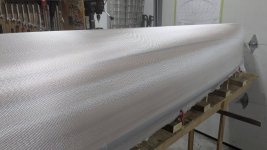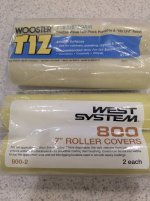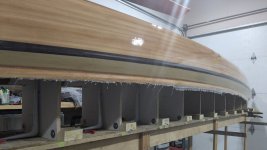I started with System Three. Agree it is a good epoxy. At the time, it was very reasonably priced. They sold out, and the price went way up.
I used their Clear Coat epoxy. It was thin, and required two extra fill coats. A great wetout epoxy though. Not the best for fill coats.
After contacting a Tech at System Three about excessive runs ? He advised I apply fill coats while the previous coat, was still tacky.
That solved the problems of runs.
At the time, I was using the big black foam roller covers, that fit a regular paint roller.
Switching to the "Cigar" type foam rollers, improved application.
This last hull, I waited a little too long, between fill coats. Yes, the next day, I was scraping runs.
Not a big problem, but it could have been avoided had my timing been better.
Jim





